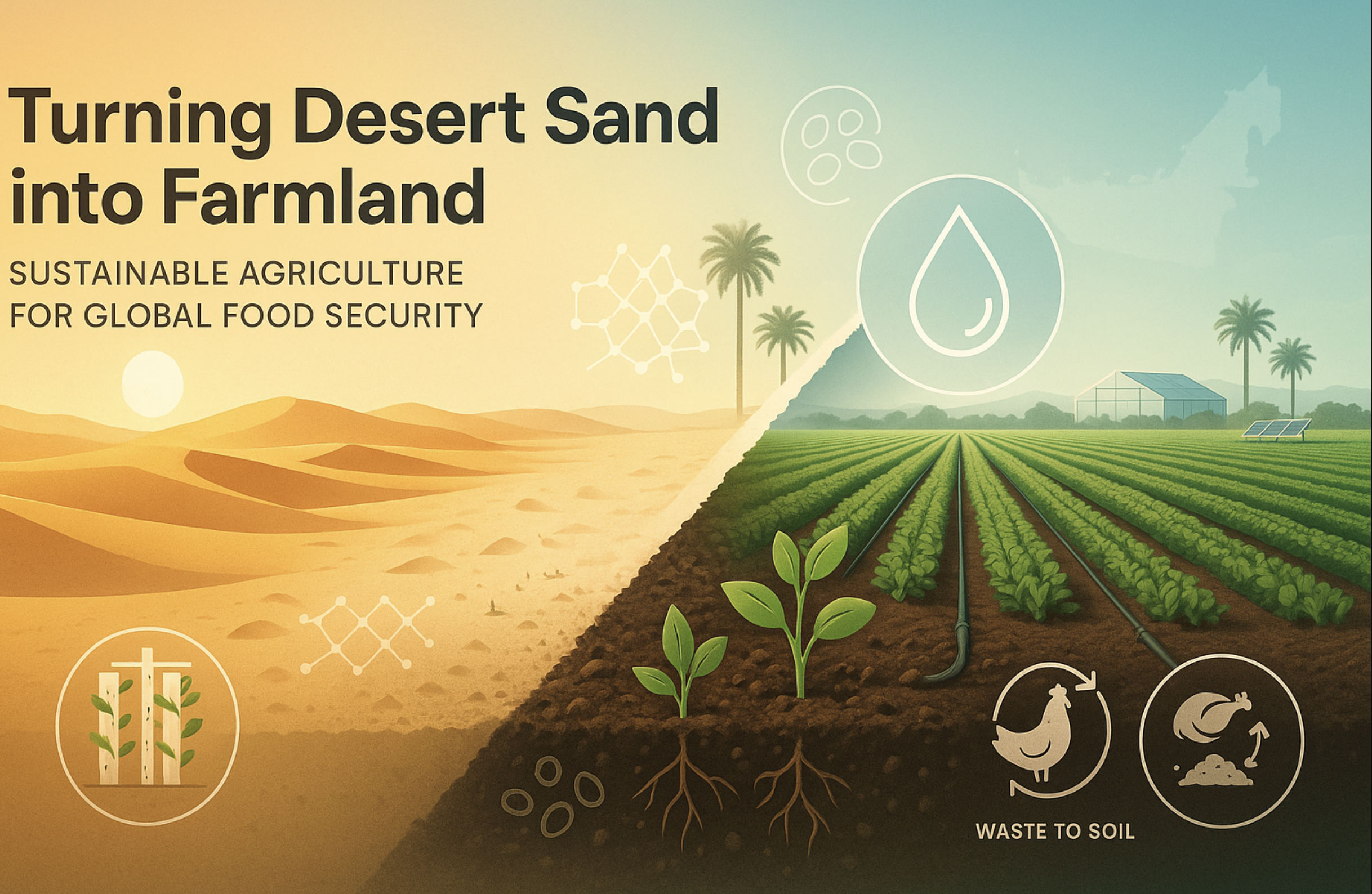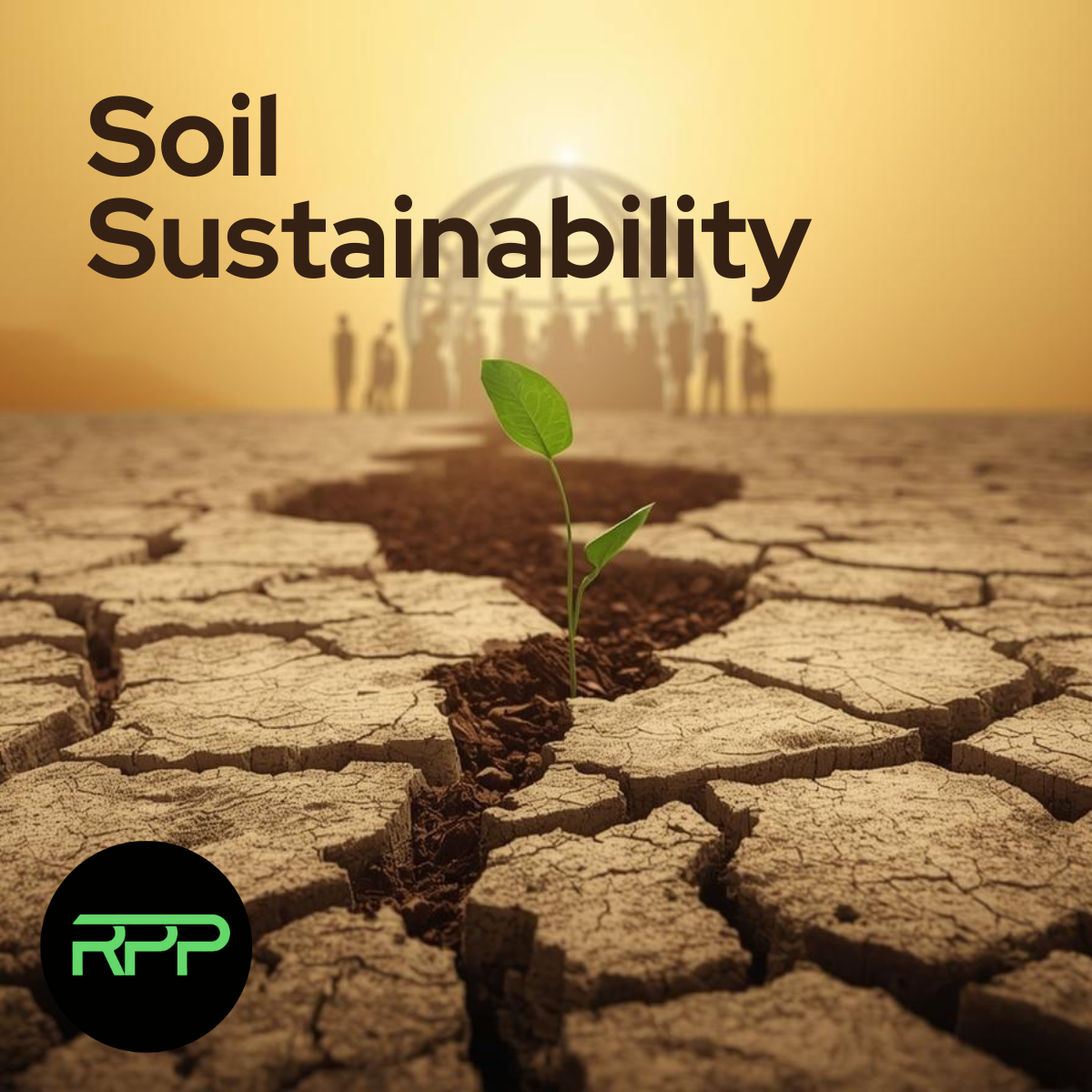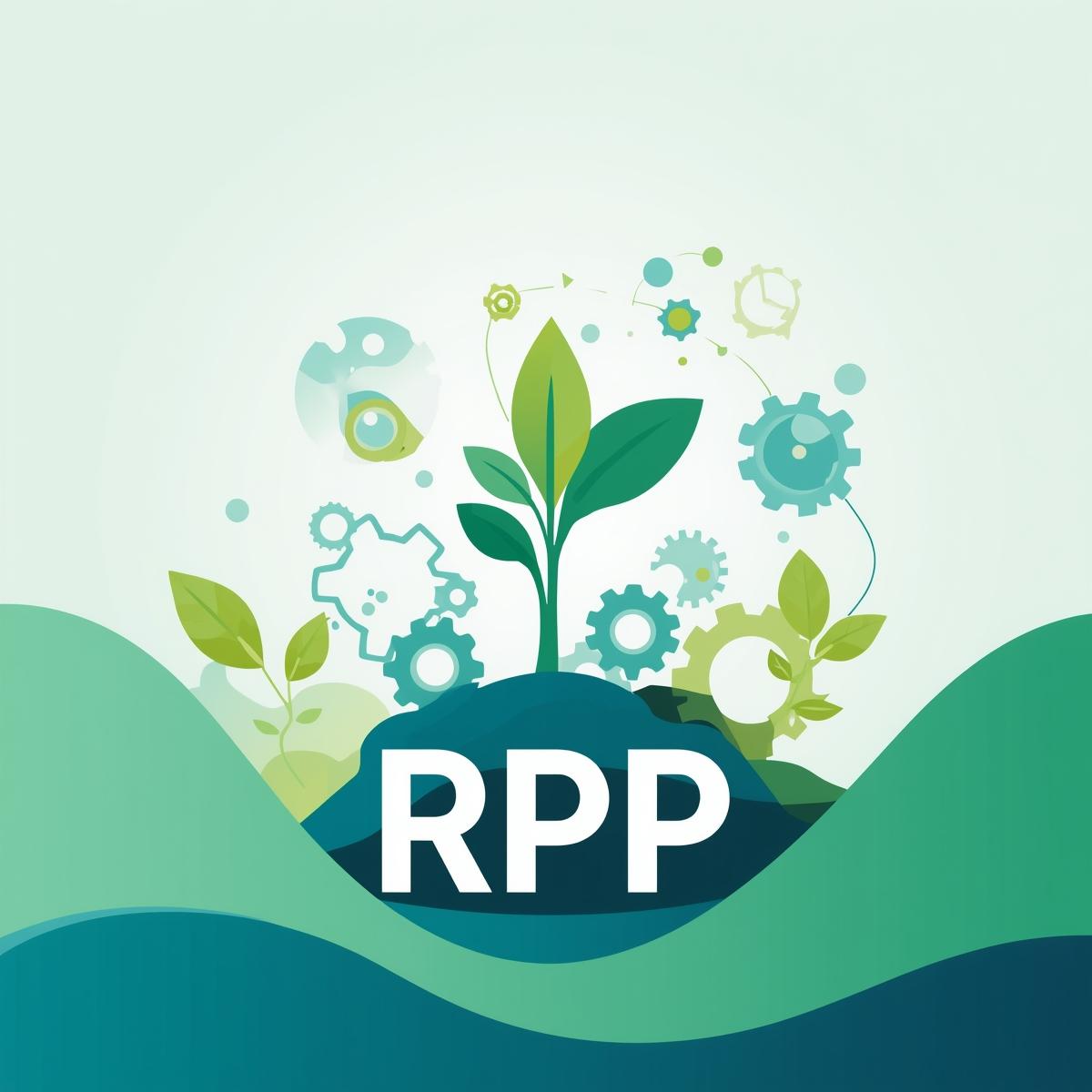The Innovation Turning Desert Sand into Farmland: A Sustainable Solution for Global Food Security
The Innovation Turning Desert Sand into Farmland: A Sustainable Solution for Global Food Security
Introduction
Turning desert sand into farmland is no longer a dream — it’s becoming a global necessity. With climate change, desertification, and population growth threatening food production, the search for sustainable agriculture has never been more urgent. Every year, millions of hectares of fertile land are lost to desertification, leaving communities vulnerable to hunger and poverty. The United Nations warns that by 2030, 135 million people could lose their homes and livelihoods because of this crisis.
But innovative solutions are emerging. From Liquid Nanoclay (LNC) technology in the UAE (BBC News report) to RPP’s groundbreaking poultry-waste soil production process, the world is witnessing a shift toward making barren deserts bloom again.

👉 RPP Technology for Soil: At RPP, we are transforming local poultry waste into nutrient-rich soil to tackle desertification and ensure long-term food security. Our approach addresses the key challenges of salination, scalability, and sustainability while providing greener growth for future generations.
Understanding the Need for Innovations in Agriculture
The global food crisis is no longer a distant threat — it is here. As the population surges, food production must rise by nearly 70% by 2050. Yet, we are losing arable land at alarming rates. Desertification alone turns an area half the size of Britain into barren land each year. Meanwhile, water scarcity and unsustainable farming methods worsen the problem.

This situation highlights the urgent need for innovative agricultural solutions that go beyond conventional farming. Turning desert sand into farmland represents one of the most promising answers to global food security. By reclaiming wastelands, we can not only grow crops but also restore ecological balance.
👉 RPP Technology for Soil: RPP addresses these agricultural challenges by producing fertile soil from waste materials. Our facilities are scalable, sustainable, and adapted to harsh desert environments, ensuring that communities gain access to both food and jobs.
The Science Behind Transforming Desert Sand into Fertile Soil
The idea of turning desert sand into farmland relies on advanced soil regeneration techniques. One groundbreaking method is Liquid Nanoclay (LNC), developed by Norwegian scientist Kristian Morten Olesen. As BBC News reports, LNC coats sand particles with clay, dramatically improving water retention. In trials conducted in the UAE, farmers cut water use by more than 50% while growing crops like okra and tomatoes.
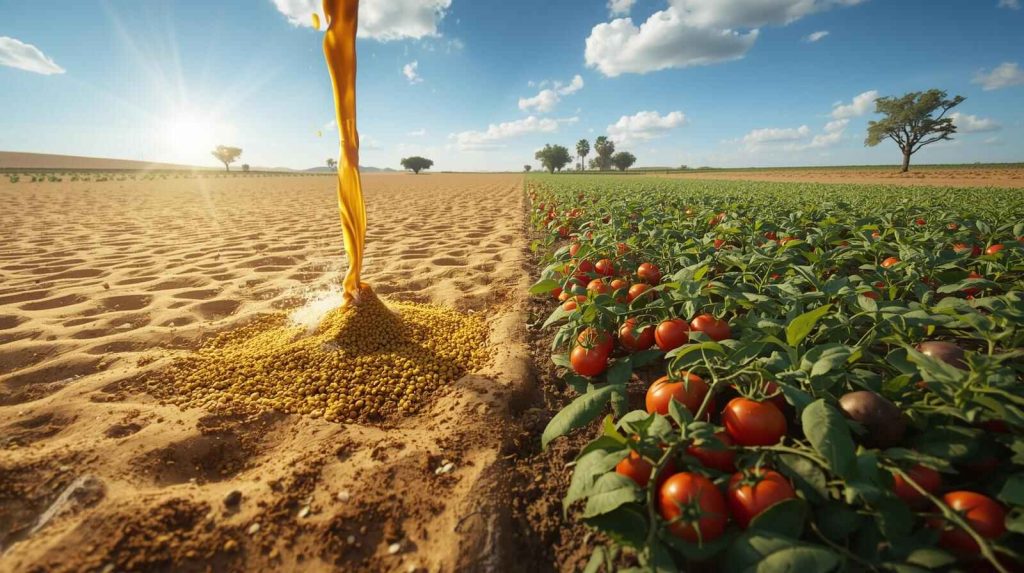
The process doesn’t rely on chemical agents, making it eco-friendly. Essentially, it transforms poor-quality sandy soils into fertile farmland in a matter of hours. Yet, high costs — ranging from $1,800 to $9,500 per hectare — make it inaccessible for small farmers.
👉 RPP Technology for Soil: Unlike costly solutions, RPP provides a locally driven, waste-based alternative. By recycling poultry waste into sustainable soil, we eliminate salination issues and create fertile land at scale. This innovation makes agriculture affordable and sustainable for communities worldwide.
Success Stories: Where This Innovation is Already Making a Difference
Across the globe, real-life examples prove that turning desert sand into farmland is not just theory. In the UAE, farmer Faisal Al Shimmari partnered with Desert Control to test Liquid Nanoclay. The results were groundbreaking: his farm used 40% less water and produced healthier crops in extreme heat. “This is a game changer,” he told the BBC.
Similar projects in arid regions of Africa and the Middle East are empowering local farmers, boosting food security, and reducing reliance on imports. The success of these case studies proves that with the right innovation, deserts can sustain thriving communities.
👉 RPP Technology for Soil: RPP has already expanded to 25+ countries, providing sustainable soil solutions. By building local production facilities, we not only restore degraded land but also create employment opportunities, training programs, and green economic growth.
The Environmental Benefits of Turning Desert Areas into Productive Farmland
The benefits of turning desert sand into farmland extend beyond food. Restoring barren land improves biodiversity, reduces carbon emissions, and supports climate resilience. Each hectare of revived land acts as a carbon sink, trapping greenhouse gases while providing habitats for wildlife.
Moreover, sustainable soil solutions drastically reduce water usage, which is crucial in desert regions. Greening deserts also combats rising temperatures by increasing vegetation cover, contributing to local climate stability.
👉 RPP Technology for Soil: At RPP, we design soil solutions with green growth in mind. Our process reduces irrigation needs and promotes sustainable ecosystems. By using waste as input, we create a circular economy where nothing is wasted, and everything contributes to a healthier planet.
The Future of Food Production: Challenges and Opportunities Ahead
Scaling up turning desert sand into farmland presents both challenges and opportunities. While the science is proven, affordability and accessibility remain barriers. High costs limit adoption, and infrastructure investments are necessary for widespread use. Yet, as demand for food security grows, investment in agricultural technology is expected to rise sharply.
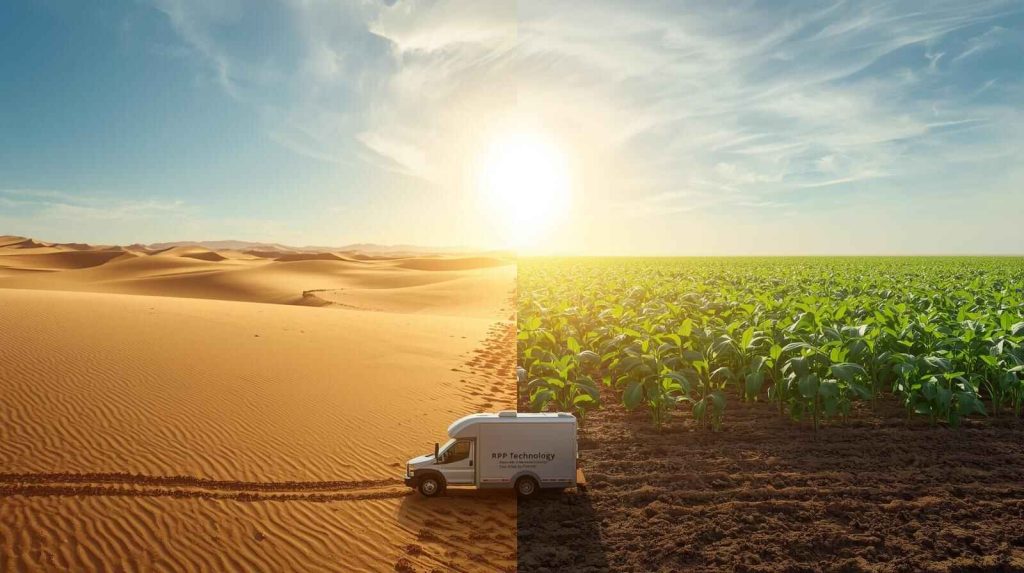
Opportunities lie in government partnerships, private-sector investment, and international cooperation. With the right frameworks, desert farming can become a global movement, reducing hunger and mitigating climate change simultaneously.
👉 RPP Technology for Soil: RPP is uniquely positioned to lead the future of soil production. Our model includes mobile laboratories, training, and facility setups that make scaling practical and cost-effective. With a focus on sustainability, we ensure that solutions today remain viable for future generations.
Conclusion: Join the Movement Towards Greener Futures
The journey of turning desert sand into farmland shows us that innovation can overcome even the harshest natural barriers. From cutting-edge Liquid Nanoclay solutions in the UAE (BBC article) to RPP’s waste-to-soil technology, the message is clear: sustainable agriculture is within reach.
Food security, environmental restoration, and green growth depend on our willingness to embrace these solutions. Governments, businesses, and communities all have a role to play in scaling up these innovations.
👉 RPP Technology for Soil: At RPP, we are committed to driving sustainable soil production and green growth across the globe. By transforming waste into fertile soil, we are not only addressing desertification but also securing the future of food production. Together, we can make deserts bloom and build a greener, food-secure tomorrow.

